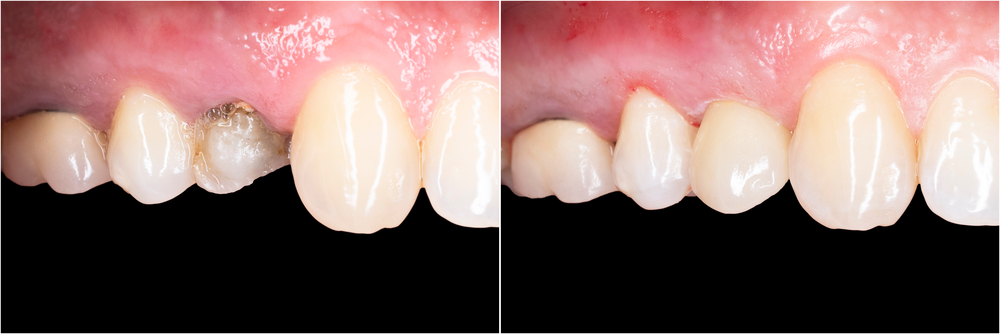
Partial or complete destruction of a tooth is one of the most common reasons for patients to visit a dentist. Affected tissues (enamel and dentin) must be restored, otherwise chewing dysfunction and other consequences cannot be avoided.
There are several options for restoring a broken tooth. The choice of a particular technique is influenced by various factors, including existing diseases of the oral cavity.
It is important to diagnose the root cause of the problem with the tooth and eliminate it. And not just temporarily “hide” visible defects with prosthetics – the source of the material is the page of dental prosthetics of the Easy Dentistry website.
In what clinical cases can a filling be used? When is crown placement indicated? Let's figure it out.
Fillings and crowns for teeth – what is it
A filling is a restoration that is created by building up the missing crown part using a special material. In modern dentistry, light fillings are used, which harden under the influence of a photopolymer lamp.
For many patients, a filling is a common treatment method, but its use is only possible to replace small defects. In case of serious damage, crowns are used.
They are orthopedic constructions in the form of a “cap”, which is installed on the tooth and allows you to restore its natural appearance. Made in the dental laboratory using different materials:
- Ceramic and zirconia. Recommended for anterior units (incisors, canines). They are highly aesthetic. Virtually indistinguishable from natural enamel.
- Metal ceramics. They have increased strength. Ideally suited for the restoration of posterior teeth (premolars, molars), which take up most of the load during chewing.
- Plastic. Temporary plastic prostheses are installed during the production of permanent crowns.
Less than 50% of the tooth is destroyed – what to choose, a crown or a filling?
In this case, filling is most often used. The dentist completely removes the destroyed tissues, cleans the carious cavity and restores the shape with the help of filling material. However, this technique is more suitable for chewing units.
Anterior units with minor damage (chips, cracks) can be restored with ceramic veneers. Such overlays can be made for the entire smile zone or just for one unit. The result of the treatment looks more aesthetic than the installation of a filling. Veneers are invisible to others, they look natural, they completely imitate their own teeth in shape.
50–70% of the tooth is destroyed
Dentists do not restore badly damaged units with a filling. Large restorations shrink over time. A microgap will appear between it and hard dental tissues. Over time, this will lead to recurrence of caries or destruction of the crown part.
If the tissues are damaged, more than half of the inlay or crown is used:
- The inlay is made from a cast of the jaw. The material is composite or pressed ceramic. In fact, this is the same seal, but more durable and does not shrink.
- If damage cannot be repaired with a tab, then a crown is used. It is also prefabricated in the dental laboratory of the clinic.
More than 75% of the tooth is destroyed
If the crown part is significantly damaged, but the roots are completely preserved, you can put a stump tab and then on install a crown on it.
The stump tab is made according to casts in the dental laboratory. Consists of two parts. The lower one is fixed in the root canals and securely holds the structure. The upper one is shaped like a worn tooth stump. The use of an inlay helps to evenly distribute the masticatory load.
After the stump is placed, a crown is placed on top. This design completely repeats the natural shape of the tooth. Thus, the lower part of the stump is fixed in the roots, and the upper part is used as a support for installing a permanent structure.
Stump inlays can be made of metal or zirconium dioxide. In the first case, the structures are used as the basis for metal-ceramic crowns. Zirconium dioxide stumps serve as a support for ceramic and zirconium structures.
Restoration of teeth without a nerve – why a filling is not suitable
When choosing a restoration method, the dentist takes into account whether the tooth is depulped (“dead”) . After removal of the “nerve”, tissue nutrition is disrupted, which worsens the adhesion of dental materials.
Many patients experience loss of filling material from a pulpless tooth, which is often associated with poor adhesion. In this case, the restoration of the destroyed crown part with a veneer or inlay will also be ineffective. The design will not last long – in a few months, most likely, it will fall out.
The restoration with the use of a crown will be optimal. In particular, this applies to units destroyed by more than 50%. The filling will not hold well, and over time it will shrink horizontally or vertically. This will affect the distance between adjacent units, leading to a change in bite.
A full-fledged prosthesis will protect the remaining hard tissues of the tooth and help prevent further destruction. This design is made according to an individual cast, so it better recreates the anatomical shape.
One thing should be remembered – the choice of restoration technique remains with the doctor. Only a dentist can determine exactly which of the methods is suitable for tooth restoration and whether the patient will need additional treatment.
Advertising. Kra23Zzeg
